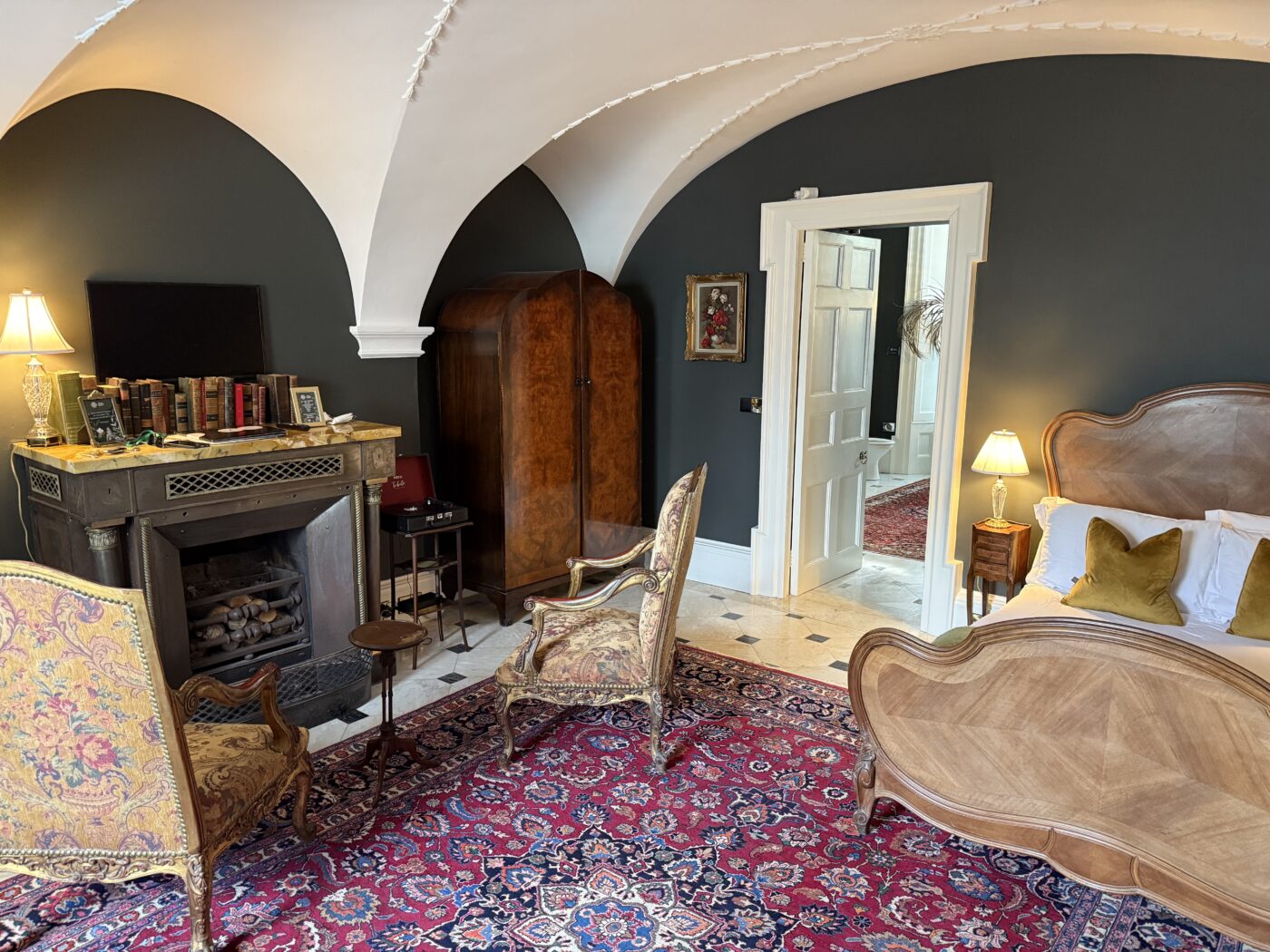WHY IRISH EYES ARE SMILING
Castles, Gardens, mountains and rivers, and a better beer than Guinness. A trip to Ireland…
When we decided on going to Ireland, my wife had two requirements: we stay in a castle and we visit the Waterford Crystal Factory. We stayed in two castles, and a tiny home, and really enjoyed visiting Waterford.
But more on that soon.
Ireland may be the friendliest place I have ever visited. Some of the drives we took were the most scenic we’ve ever had. I discovered that Murphy’s may be a better stout ale than Guinness, and that touring a lighthouse or The Butter Museum is far more interesting than one might expect.
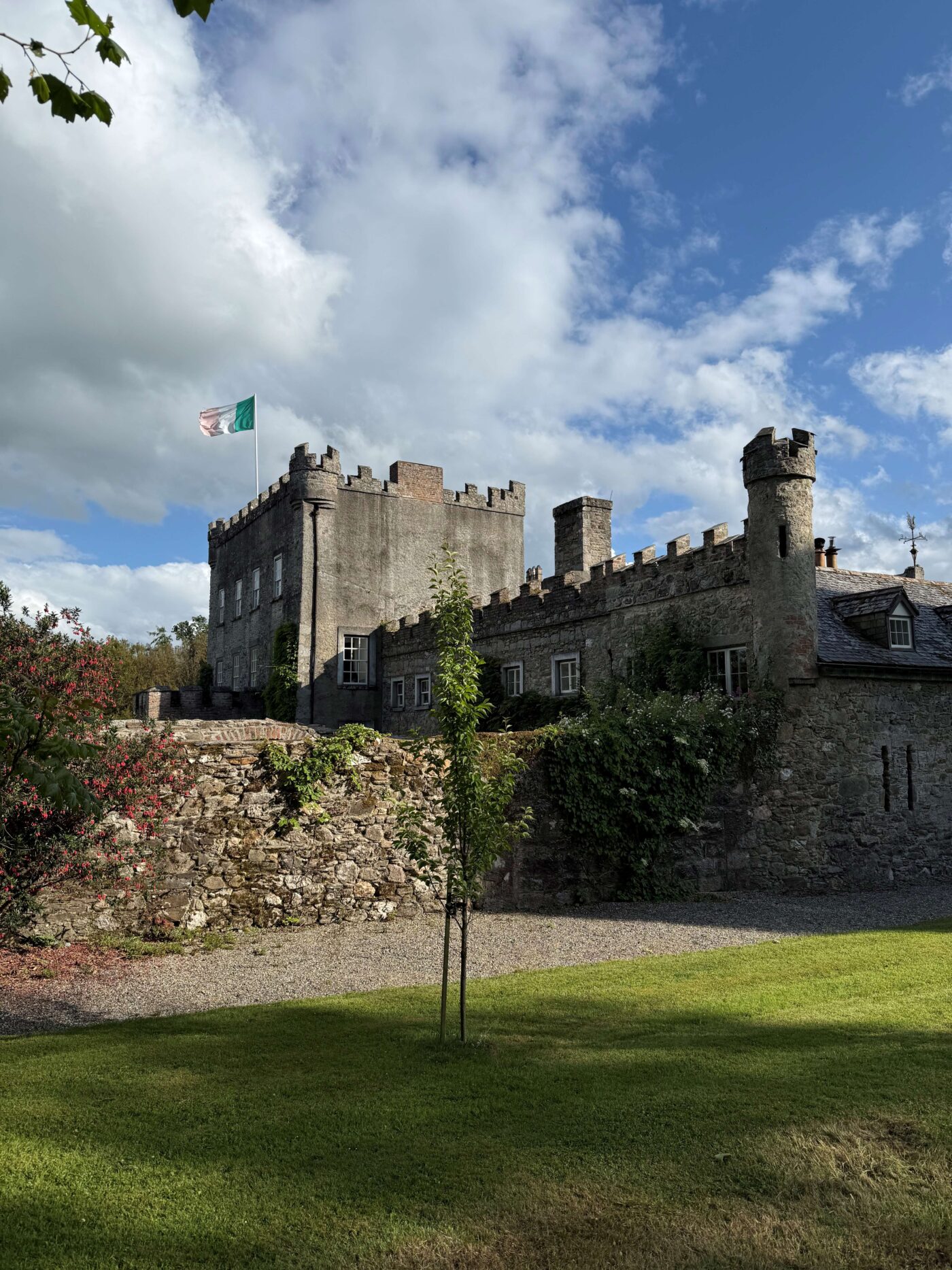
Huntington Castle in County Carlow has been in Alexander Durdin Robertson’s family for exactly 400 years. Alexander explained to us that maintaining the castle is an unending task, yet he evidently enjoys it. Assisted by his wife and three sons, he is not only a farmer across his 160 acres, but he maintains a healthy accommodations business as well as daily tour guides, and manages a tea shop on the grounds. Located south of Dublin in the village of Clonegal, the castle is suitably imposing, with a sense of grandeur and solidity greater than you see in the mansions of Newport, RI, say or Hearst Castle in California.
As he walked us through the castle, he explained that with the advent of Airbnb, his business messaging has become far more persuasive. Earlier, when guests were booking at a castle, “they equated it to a hotel, but it is actually closer to an Airbnb in the sense that you’re living in someone’s residence,” Alexander explained.
And this residence is far different than your usual Airbnb booking, of course. Being a castle, it’s filled with family portraits going back for centuries, for a start, as well as the requisite swords, chain mail, tapestries and the like.
Alexander mentioned that the only furniture he changes out are mattresses. Our room was indeed filled with antiques and relics, but we slept soundly in the four poster bed, secure knowing that being on the highest point in the area we were safe from any leftover marauding Vikings. Sure, they had swept through in the 8th century and were gone by 1014, but, you know…
The gardens at Huntington Castle were wonderful, expansive and essentially empty. We discovered that part of the charm of staying in a castle means you won’t have a front desk to ring for a wake-up call or to fetch a taxi. And that actually is a charm.
We were advised that the town of Doolin is known for its authentic Irish music. We seemed to bump into music around every corner, but Doolin over-delivered, in several respects. We checked into one of the six Wild Meadow Huts (ours was called Dandelion). This is definitely on the other end of the spectrum from the castles we stayed in, but certainly enjoyable. The fog and mist that greeted us as we crept into Doolin was just about perfect, especially when we availed ourselves of the hot tub and sauna before a wonderful dinner at Fiddle and Bow.
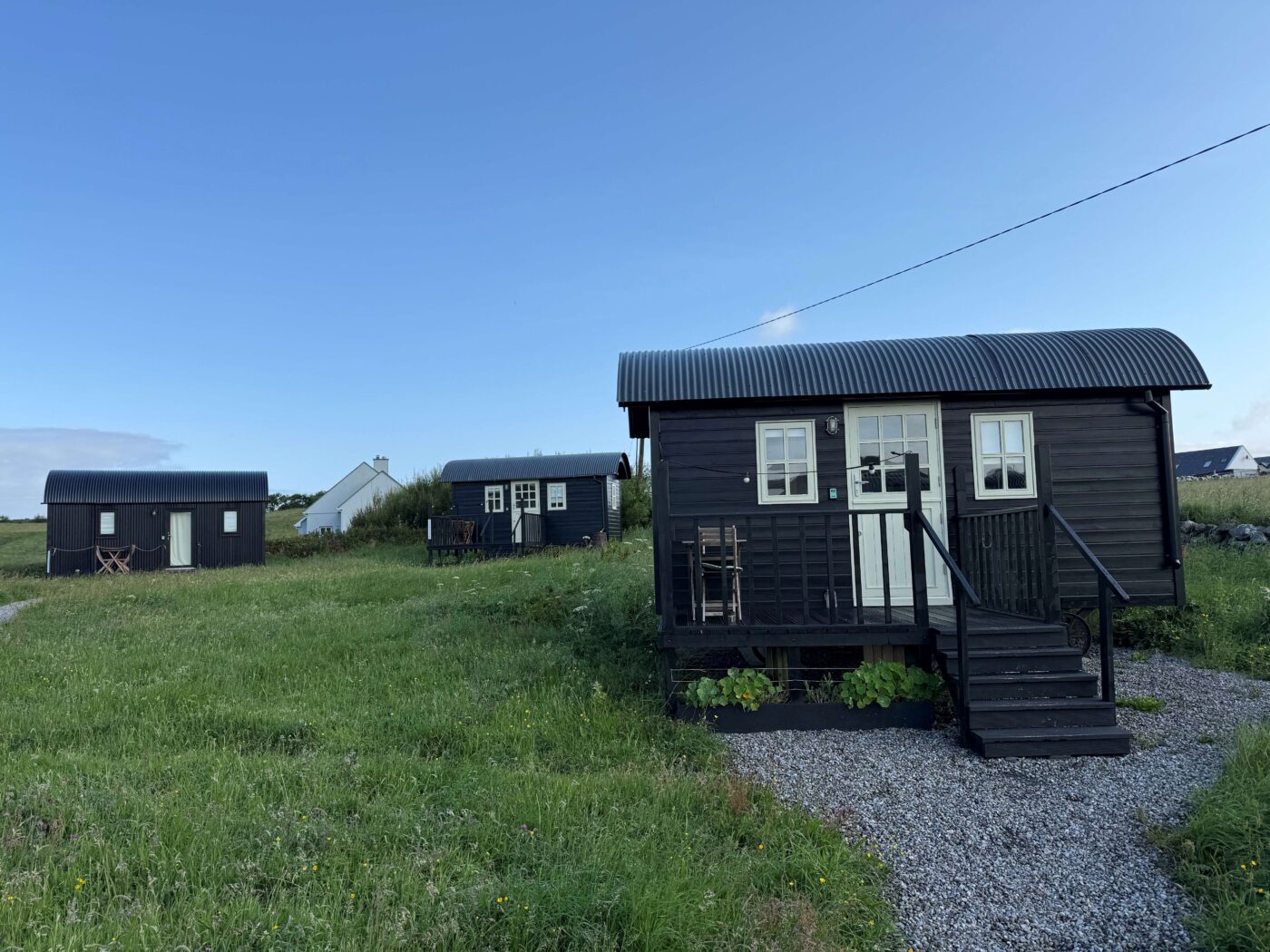
The actual fiddles and bows being played by the locals certainly helped, but it was really the gnocchi and bouillabaisse that pulled the meal together.
The next day, before heading out for her daily morning swim, co-owner Annie stopped by to tell us about how she and her husband Connor came up with the idea for Wild Meadow Huts. She accurately described them as “luxury self-catered tiny homes,” but said she recognizes the need to use “luxury glamping” for internet stimulation and categorization.
“We designed it for what we liked,” Annie said. Indeed, the small footprint is like being on a cabin cruiser, with every square foot thoughtfully laid out. Connor, formerly an airline engineer at Shannon Airport, built the huts and Annie decorated them. When they bought the land 30 years ago they stopped the grazing and fertilizing, and slowly the flowers came back. Hence the bucolic names of the huts.

More than once in our Doolin days my wife and I thought about punting it all and settling into a tiny home.
Annie left for her swim and we set out on the Doolin Ferry to Inishmore, where we tooled around the island on electric bikes. The gently rolling hills, the endless stone walls, the dearth of cars combined to make it stunning.
We hiked up to Dun Aonghasa, an Iron Age fort essentially hanging on the edge of the cliff over the ocean. With none of the OSHA regulations we’re all accustomed to back home, it was interesting to watch visitors creep up to the edge of the 330 foot cliff and quickly pull back. How and who back in the day got all these stones up to the top of the highest point in the island is a mystery. Perhaps equally mysterious, but more bucolic, is the same question for the miles and miles of stone walls you see everywhere in the Irish countryside.
On the way back from the island the ferry swung past the Cliffs of Moher, made famous in “The Princess Bride.” Yes, they were inconceivably imposing.
Our visit to Doolin Music House was, not to exhaust a cliche, magical. Christy Barry and James Devitt hosted about 12 of us in Christy’s living room. They spoke of the history of music in the area, pointing to portraits of their teachers and musical legends. The pair in turn have been teaching a crop of youngsters, passing down the melodies and stories for the ages. For its size, Ireland certainly punches above its weight in so many categories. With a population of 5.4 million, Ireland’s contribution to music alone is astounding.
I booked us into a second castle, Ballea Castle, owned and run by Louise A. O’Mahony. Louise is charming, friendly and bubbly, with a classic Irish demeanor, but is an accomplished hospitality entrepreneur as well.
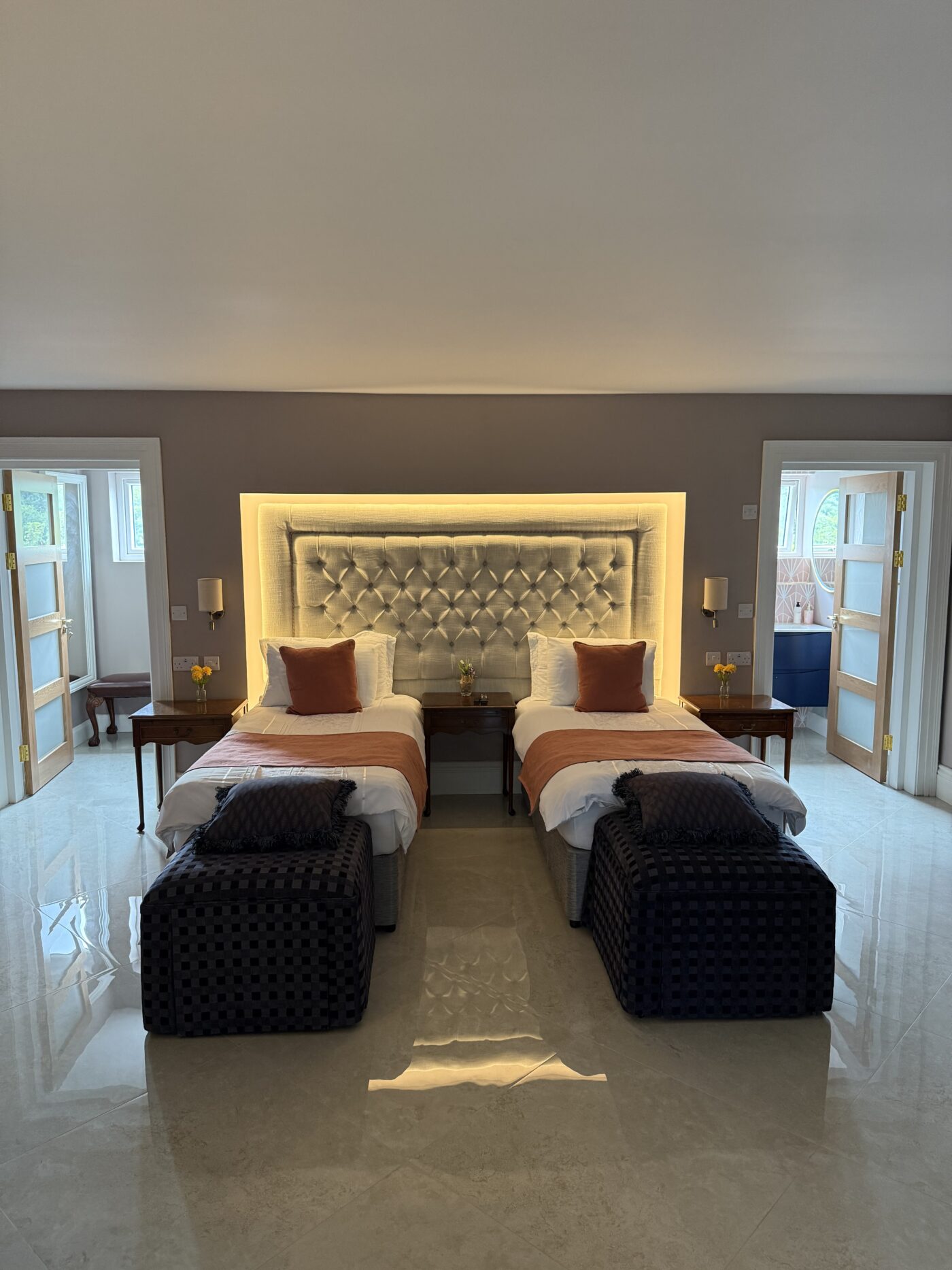
Located in County Cork, it is Ireland’s oldest inhabited castle and indeed it has the compelling exterior architecture of the stone castle you expect, but inside you have a renovated, comfortable interior. Louise explained this juxtaposition. When the property was on offer five years ago “it was looking pretty sad, with water ingress and 50 drip trays. It was damp, dark, freezing cold, with cracked walls, but I purchased it.”
She and her husband oversaw a massive renovation during Covid. “Workers arrived every morning and slowly the rooms could be used as wiring and plumbing was fitted. What could not be renovated was used to fill in a swimming pool, into which lambs were fatally falling.”
We were able to peek into the six suites, each was luxuriously comfortable with a spacious en suite bathroom. We enjoyed the juxtaposition of castle living and tiny homes!
Between Killarney and Kenmar, we drove the Ring of Kerry. We started out next to the gorgeous bodies of water and slowly climbed higher and higher until we reached Ladies View, looking out over the lakes of Killarney. The spot apparently “gets its name from the pleasure expressed by Queen Victoria’s ladies-in-waiting on their visit in 1861,” according to the national tourist board. But the area now seemed comfortably desolated; I think we only saw other cars because it was early evening and the tour buses had gone home.
The craggy landscape, the fifty shades of green, scattered sheep and the thin waterfall streams tumbling down the mountains, made the whole experience surreal. We stopped many times in the middle of the road (essentially only wide enough for one car) to get out and ogle.
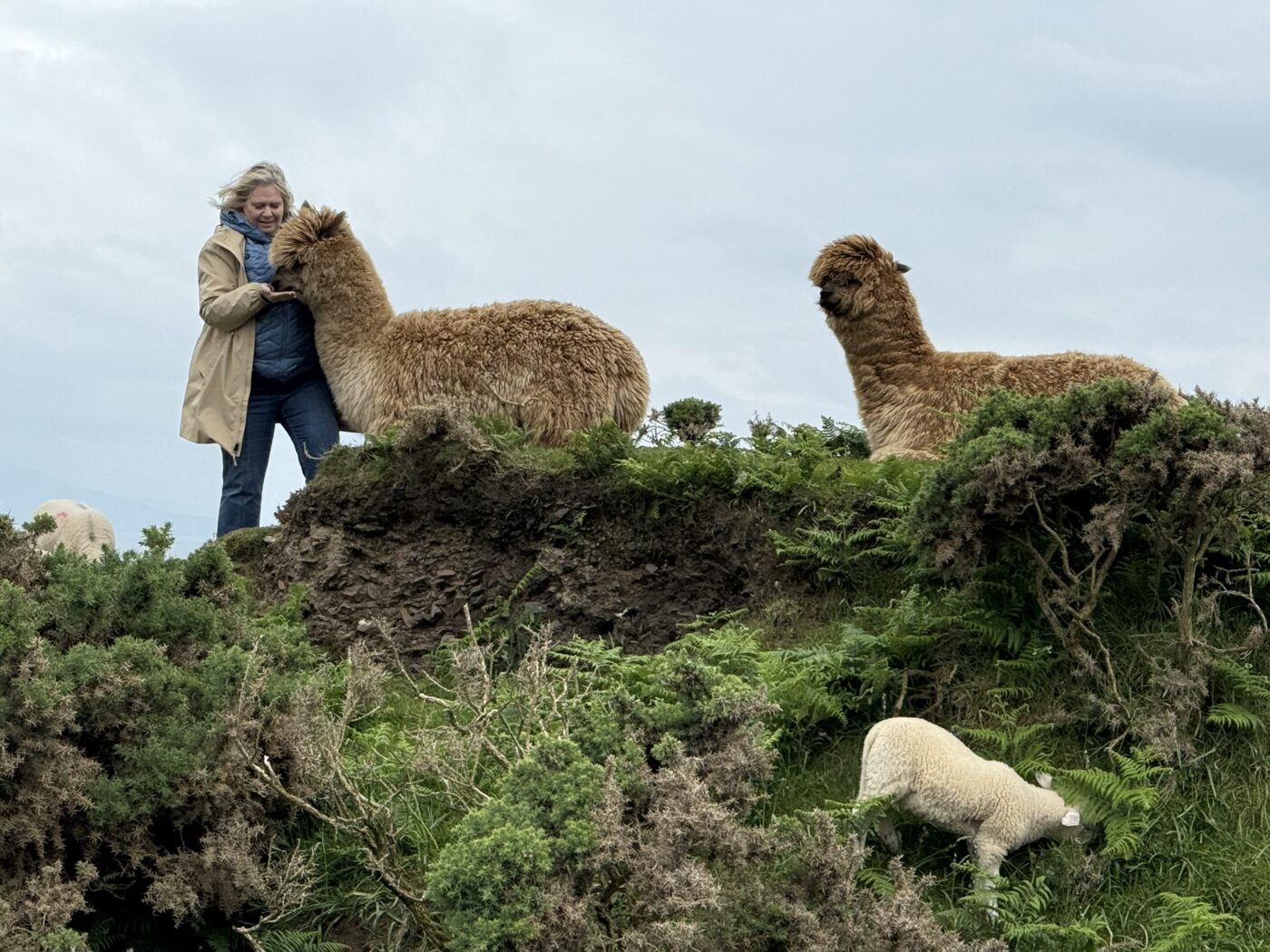
The last two highlights of our trip were the most unexpected
Mount Congreve House and Gardens is situated in County Waterford and is home to one of the largest collections of plants in the world. The house, home to six generations of Congreves, was built in 1760 by the celebrated local architect John Roberts.
We stayed in one of the lushly appointed Courtyard Suites, with its tall vaulted ceilings, elegant fireplace and wonderful writing desk.
We were given a tour by property director Ray Sinnott, who provided the history of this remarkable spot. Although we didn’t cover the full 16 miles of meandering pathways in the woodland garden, we did get an amazing history lesson.
Ray started working on the grounds as a teenager and came to know Ambrose Congreve, who was the last of the Congreves. Ray described how Ambrose lived a colorful life until his passing at the age of 104. He married well at an older age, to an American from Virginia who provided him the financial means by which to expand his estate along River Suir. The result deserves the distinction as one of “The Great Gardens of the World.”
As we ambled through the gardens Ray unfolded the fascinating story of how Mr. Congreve kept the property in the family but was only able to expand operations after marrying his American wife and developing business interests all over the world. The attendant business of the Congreve House was eventually purchased by a conglomerate, which allowed him to return to his pastoral interests.
In his younger years Ambrose was once roommates with Ian Fleming; both served as intelligence officers in WW2 and remained lifelong friends. He was a friend of Winston Churchill, Aristotle Onassis and Lionel de Rothschild, and later kept a residence next door to (then Prince, now King) Charles.
When Mrs. Congreve entered the picture, she brought a subtle American redesign to the three separate buildings on the grounds, joining them in an architecturally harmonious way. The result is a very impressive, broad front and back to the main building. When Ambrose Congreve died in 2011, he left Mount Congreve Estate in Trust to the Irish State.
The Estate also opens on to one of Ireland’s Greenways, a bike-only path, along the River Suir, which passes through Waterford on its way to the Atlantic.
The city of Waterford has done a remarkable job in presenting its critical place in Irish and European history. We did a superb walking tour, which boasts “1000 years in 1000 steps” and provides a solid overview.
I particularly enjoyed the spot at which Thomas Meagher in the late 1800s introduced his vision of an Irish flag, which was adopted when Ireland gained its independence in 1916. The well-appointed Medieval Museum sketches the influential role of the Vikings.
And we were surprised at how much we enjoyed (or at least I was surprised) the tour of Waterford Crystal Factory. The craftsmanship is remarkable and the visit to the working factory does its job of giving punters like me a newfound appreciation of the artistry being done there. The tour guide provided an overview of the company’s history since being founded in 1783, and explained the reason for the 100 year closure of the company was not only because of the potato famine but also because of a crushing tax imposed on materials crucial to the manufacture of crystal.
Yes, we exited through the gift shop, and yes we left with six wonderful whiskey tumblers.
Any rumors about bad food in Ireland are wrong, we ate very well. The stories about the humor and congeniality of the Irish are all true.
You don’t go to Ireland for the weather. Striking up one of myriad conversations with a local in a pub, I now agree that ‘The only accurate weather report is yesterday’s.’






